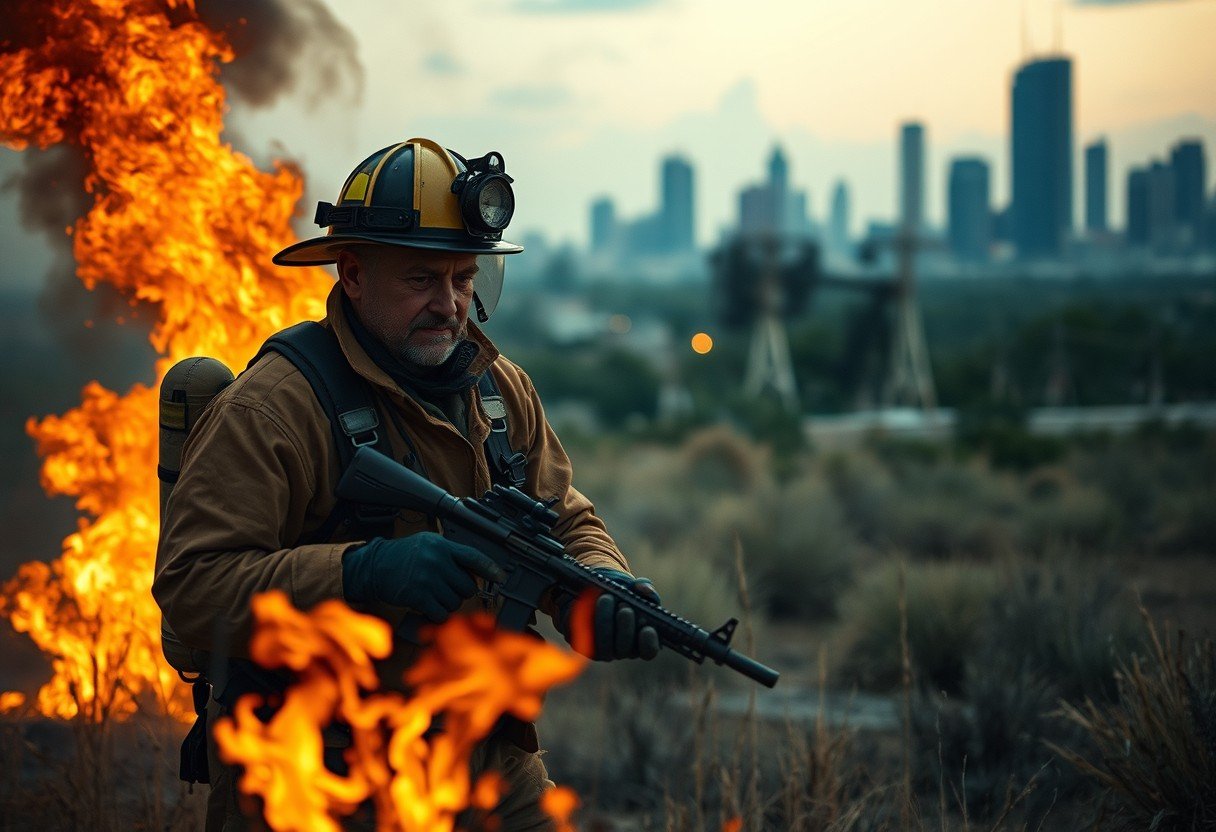Emergency situations can happen without warning, and knowing how to get help is vital. In Texas, dialing 9-1-1 is your direct link to police, fire, and medical services. Inspired by shows like ‘9-1-1: Lone Star,’ this guide explains how the system works, the challenges responders face, and how you can be prepared. Understanding this lifeline is the first step toward ensuring safety for yourself and your community in an unexpected crisis.
What is the 9-1-1 System and How Did it Start?
The 9-1-1 system is the universal emergency number in the United States, connecting you directly to trained dispatchers who can send the help you need. It is more than just a number; it is a coordinated network designed for rapid crisis response.
The system wasn’t always so simple. Before 1968, people had to dial different numbers for police, fire, or medical emergencies. The first-ever 9-1-1 call was made in Haleyville, Alabama, marking a huge step forward in public safety. This standardized number was gradually adopted across the country, transforming emergency response.
When you call 9-1-1, the dispatcher’s role is critical. They are your first point of contact, trained to assess your situation quickly and calmly. They gather essential information like your location and the nature of the emergency to send the right responders. These dispatchers can also provide life-saving instructions over the phone until help arrives.
The Structure of Emergency Response in Texas
In the Lone Star State, emergency response is a massive, coordinated effort involving multiple agencies. It is a well-organized structure that ensures help can be deployed effectively across Texas’s vast landscape.
Local governments are on the front lines, managing their own police departments, fire stations, and EMS teams. However, for larger incidents, they work closely with state-level organizations. The Texas Division of Emergency Management (TDEM) plays a key role in coordinating statewide resources, especially during major disasters like hurricanes or widespread flooding. This partnership ensures that even small communities can receive comprehensive support when they need it most.
Unique Challenges for Texas First Responders
First responders in Texas face a unique set of challenges that can complicate their work. The sheer size and diversity of the state present significant logistical hurdles.
The vast geography of Texas often means responders must travel long distances to reach rural areas, which can delay assistance when every second counts. The state’s varied climate also creates problems, from battling wildfires in dry West Texas to conducting water rescues during coastal hurricanes. These environmental factors require responders to be highly adaptable and resourceful.
Furthermore, varying socioeconomic conditions across different regions can impact emergency management. Responders must be prepared to handle a wide array of situations influenced by the specific needs and resources of the communities they serve.
How Technology is Revolutionizing 9-1-1 Calls
Technology has dramatically improved the efficiency and effectiveness of 9-1-1 operations. Modern advancements allow for faster location tracking, better communication, and more accurate information, which helps first responders save more lives.
Key innovations have changed the game for emergency services. These tools give dispatchers and responders more information than ever before, leading to quicker and better-prepared teams arriving at the scene of an emergency.
- Enhanced GPS: This technology helps dispatchers pinpoint a caller’s exact location, even from a mobile phone, which is crucial if the caller is unable to give an address.
- Text-to-911: This service provides a vital lifeline for individuals who are deaf, hard of hearing, or in a situation where speaking on the phone would be dangerous.
- Real-time Data Sharing: This allows different agencies like police, fire, and EMS to share live information, improving coordination during a response.
These technological leaps have a profound impact on response times. By using advanced tools, emergency teams can assess situations more accurately and plan the most efficient routes.
| Technology | Benefit to Emergency Response |
|---|---|
| GPS Coordinates | Faster and more accurate location identification. |
| Automated Dispatch Systems | Reduces human error and speeds up the process of sending help. |
| CCTV Integration | Provides dispatchers with live video of an incident for better situational awareness. |
The Power of Teamwork in Emergency Services
No single agency can handle a major emergency alone. As often shown in ‘9-1-1: Lone Star,’ effective crisis management relies on strong collaborations between different organizations. This synergy ensures a comprehensive and efficient response.
Local and state agencies form the backbone of this collaborative effort. Police departments, fire services, and emergency medical teams work together daily. During large-scale events, they coordinate with state bodies like the TDEM to manage resources and communication, ensuring a unified command structure.
Non-profit organizations also play a vital role. Groups like the American Red Cross and local community organizations step in to provide critical support that governmental agencies may not cover. These non-profits are essential for bridging gaps in services and supporting community resilience during and after a crisis. They often mobilize volunteers, provide shelter and food, and offer mental health support to victims and first responders alike.
Your Role in Community Emergency Preparedness
While first responders are highly trained, community safety is a shared responsibility. Being prepared and aware of local emergency procedures can make a significant difference during a crisis.
One of the best ways to contribute is through education. Many communities offer workshops and resources on topics like first aid, evacuation routes, and how to create a family emergency plan. Being educated on these procedures equips you with the confidence to act decisively when it matters most.
Participating in training initiatives can further strengthen your community’s resilience. These programs often include:
- First aid and CPR courses
- Disaster preparedness workshops
- Community Emergency Response Team (CERT) training
By getting involved, you become an active participant in your own safety. These initiatives not only teach life-saving skills but also foster a sense of unity, encouraging neighbors to support one another during tough times.
Frequently Asked Questions
What is ‘9-1-1: Lone Star’ about?
‘9-1-1: Lone Star’ is a drama series focused on the professional and personal lives of first responders in Austin, Texas. It showcases the high-stakes emergencies they face, highlighting themes of teamwork, bravery, and resilience.
Are the emergencies in the show based on real events?
Many of the incidents depicted in the series are inspired by real-life 9-1-1 calls and events. The writers often consult with emergency service professionals to ensure the scenarios are portrayed with authenticity and respect for the challenges first responders face.
What should I do if I call 9-1-1 by accident?
If you dial 9-1-1 by mistake, do not hang up. Stay on the line and calmly explain to the dispatcher that you called by accident and there is no emergency. This prevents them from sending responders to your location unnecessarily.
How does Text-to-911 work in Texas?
Text-to-911 is available in many areas across Texas and allows you to contact emergency services by sending a text message to 911. It’s an important option for those who are hearing or speech impaired, or for when making a voice call is not safe.
How can I prepare my family for an emergency?
Create a family emergency plan that includes designated meeting places and out-of-state contacts. You should also assemble an emergency kit with essentials like water, non-perishable food, a first-aid kit, a flashlight, and any necessary medications.









Leave a Comment